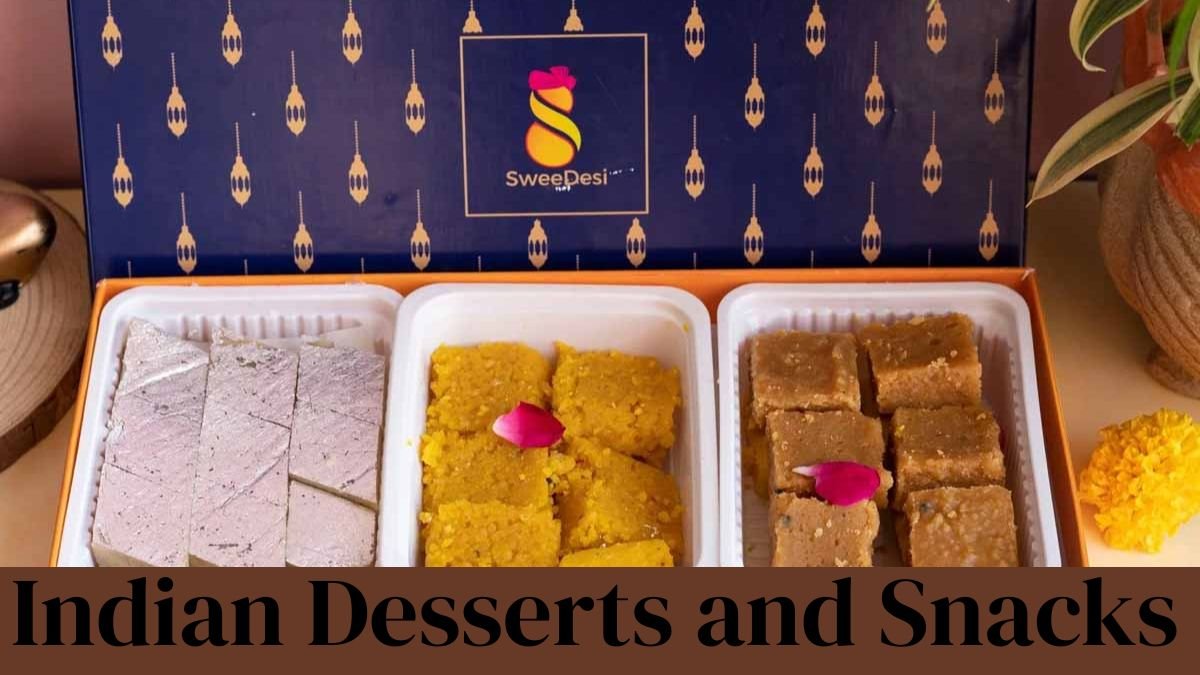Regional Indian Desserts and Snacks in 2025 – A Journey Through Traditional Flavors . India’s food is full of diversity and cultural heritage. Every state and region has its own identity, taste and traditions. Sweets and snacks, in particular, are not just a part of the meal, but they are also an important part of festivals, celebrations and family gatherings. In 2025, we will travel to traditional sweets and snacks from different parts of India, and understand how they bring our cultural identity and taste journey alive.
North Indian Sweets – A Confluence of Pure Taste and Festivals
In North India, the importance of sweets and snacks is visible in every festive and religious occasion. For example, Rasgulla, Gajar Ka Halwa and Peda are very popular in Uttar Pradesh and Delhi. Gajar Ka Halwa, also known as Karot Halwa, is especially liked in winters. It is cooked in ghee, milk and sugar syrup and has a feel of tradition in its taste.
Apart from this, Laddu and Barfi are also made on special occasions. There are many varieties of laddoos – besan, coconut and rava laddoos – that not only provide sweetness but also nutrition. Along with sweets, snacks like pakoras, samosas and kachoris are also quite popular in North India. These snacks are a delight to have with tea or as an evening snack.
Sweets and Snacks of West India – A Blend of Taste and Colour
The traditional sweets and snacks of Gujarat, Maharashtra and Rajasthan in West India are quite unique. Dhokla and Khaman from Gujarat are a wonderful blend of taste and nutrition. Dhokla is light and spongy, while Khaman has a mild sour and spicy flavour.
Sweets like Gatte ki Sabzi and Ghevar have special significance in Rajasthan. Ghevar is especially made during Teej and Sawan. Puda, Modak and Puranpoli are quite popular in Maharashtra. Modaks are specially made on the occasion of Ganesh Chaturthi and hold special significance for the devotees.
South India – A unique blend of spices and sweets
The sweets and snacks of South India have a completely different and spicy taste. Dishes like Misti Dosa, Kolakudi and Payasam are very famous in Tamil Nadu. Payasam, which is made from rice or chana dal, is an integral part of festivals and wedding ceremonies.
Savoury snacks like Arjun, Bonda and Pulak are popular in Andhra Pradesh and Telangana. Appam, Idli and Payasam are made especially on Sundays and festivals in Kerala. These sweets and snacks have a wonderful combination of coconut, jaggery and spices.
East India – A blend of sweet and light snacks
The sweets and snacks in East India are light and sweet in taste. Rasgulla and Modak of West Bengal are famous all over the world. Sandesh and Rasmalai of Bengal are excellent for sweetness and refreshing.
In Odisha, cashew and coconut barfi is made especially during festivals. In snacks, chakli and pakodas are made with a mild use of turmeric and spices. These snacks not only taste good but also represent tradition and culture.
North-East India – Natural Ingredients and Local Flavors
The north-eastern states have a rich use of natural ingredients in sweets and snacks. Assam and Meghalaya have Jolpai, Pitha and a variety of food. Pitha is made from rice and jaggery and is specially prepared during festivals.
Rice cakes and local snacks are special in Manipur and Nagaland. They are made with local fruits and spices and are also healthy. These sweets and snacks have a wonderful balance of natural flavor and nutrition.
Cultural significance of traditional sweets
Sweets and snacks in India are not just made for taste. They are an integral part of festivals, weddings, birthdays, and religious rituals. For example, distributing sweets and namkeen on Diwali is considered a symbol of happiness and prosperity. Making modaks on Ganesh Chaturthi is considered dear to Lord Ganesha. The significance of sweets and snacks varies in every state according to their cultural tradition and festival.
A blend of traditional and modern in 2025
In 2025, India will also see a blend of modernity in traditional sweets and snacks. For example, modern rasgulla, sugar-free halwa and fusion samosa have arrived in the market. These are prepared according to modern nutrition and health while maintaining the traditional taste.
Traditional dishes with international flavors, such as modern laddu or chocolate barfi, are becoming popular among children and the younger generation. It offers a wonderful balance of traditional and modern taste.
Shopping tips and shopping guide
When buying traditional sweets and snacks in 2025, always buy from trusted stores and online platforms. Offers and packages are available on festivals and special occasions. It is important to check the freshness, ingredients and packaging of the sweets and snacks. If possible, choose local or homemade options to balance both taste and health.
Homemade tips
Making traditional sweets and snacks at home is still popular. When making at home, you can modify the ingredients and taste. For example, using jaggery instead of sugar, reducing the amount of ghee or using coconut can be healthier.
Cooking with young children is a great way to connect them with Indian culture and food traditions. Cooking at home not only enhances the taste, but also strengthens the celebration and family bonding.
Conclusion
In India’s diversity, sweets and snacks are not just food, but a symbol of culture, tradition and festivals. In 2025, the blend of traditional and modern flavours makes Indian food even more interesting and delicious. Regional cuisines from the North, South, East, West and North-East add joy to every family, festival and celebration.
Shopping from the right stores, checking for freshness and ingredients, and sometimes making them at home, enhances the enjoyment of these sweets and snacks. Taste these traditional recipes with your family and friends this year and experience the colourful and delicious journey of Indian culture.

